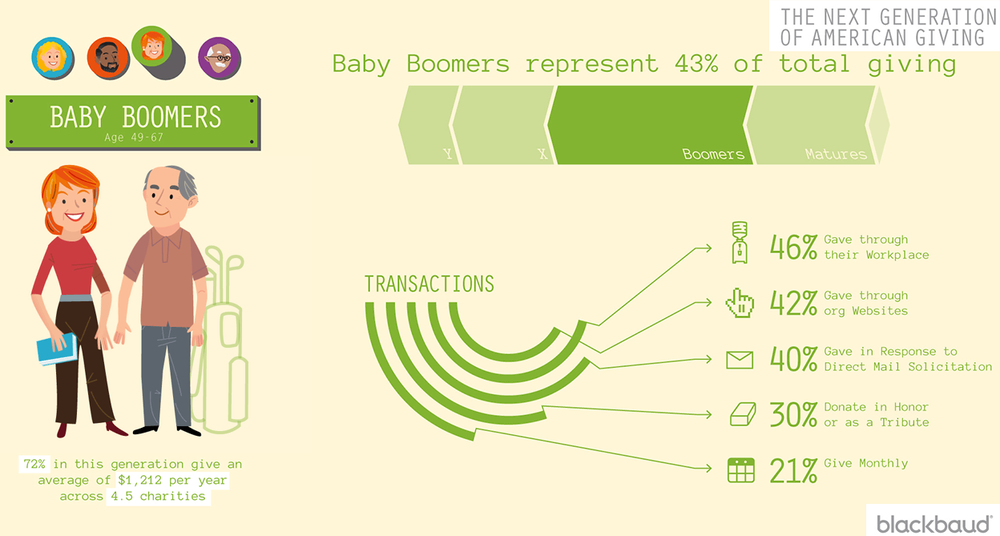Accounting
Baby Boomers Lead the Way in Charitable Giving
When it comes to charitable giving, Baby Boomers are still the most active, even while at the same time they are looking at retirement and aging issues. The group, which includes people aged 49-67, donate more than 43 percent of all charity dollars, according to the Blackbaud Next Generation of American Giving study.
Aug. 13, 2013

When it comes to charitable giving, Baby Boomers are still the most active, even while at the same time they are looking at retirement and aging issues. The group, which includes people aged 49-67, donate more than 43 percent of all charity dollars, according to the Blackbaud Next Generation of American Giving study.
The report explores charitable giving trends and engagement behaviors and attitudes across four different generations – Matures (68+), Boomers (49-67), Gen X (33-48) and Gen Y (18-32). It also showed that multichannel engagement (giving by various methods such as online, check and in person) is the new normal, but the ideal mix varies from generation to generation.
“The way supporters give and interact with nonprofits continues to evolve and change,” said Dennis McCarthy, vice president of strategy for Target Analytics, a division of Blackbaud. “For the first time, we are seeing a different generation emerge as the torchbearer of giving. This really signals a strong shift is needed in the way nonprofits think about supporter engagement.”
Key Findings Include:
- Majority of Americans give, but overall giving remains relatively flat – 60 percent of Gen X and Y, 72 percent of Boomers and 88 percent of Matures donate to charity. However, most donors say the amount they give and the number of charities they will give to in the near future will remain the same (59% and 70% respectively).
- Boomers dominate charitable giving and will do so for the foreseeable future – Baby Boomers represent the largest donor group numerically, and as a result donate the most dollars to charity (43 percent of all dollars donated).
- Gen Y demands the most accountability from nonprofits – Nearly 60 percent of Gen Y identified the ability to directly see the impact of their donation as a critical part of the decision process – this tails off with the older generations.
- Social service charities, houses of worship and health organizations are supported by the largest percentage of donors across all generations, however, interesting trends emerged across the generations –
- Gen Y is the least likely to support local social services
- Gen X and Gen Y are more likely to support children’s charities
- Boomers and Matures are more likely to support veterans’ causes
- Gen Y are less likely to support environmental causes
- Gen X and Gen Y are more likely to support human rights and international causes
- Money matters most to charities, according to Boomers and Matures – Almost half of Boomers and Matures feel that monetary donations make the biggest difference, while only 36 percent of Gen X and 25 percent of Gen Y feel the same.
- Direct mail is still very viable, but it’s on the decline – Online giving continues to rise in importance and prominence, with the largest group of donors (Boomers) reporting to give slightly more via online (42 percent) than direct mail (40 percent).
“The majority of nonprofit marketing spend and tactics are focused on Mature donors,” said Pam Loeb, principal, Edge Research. “However, we are starting to see a shift as Boomers become the dominant force in charitable giving and will remain so for quite some time. Now it’s more important than ever for nonprofits to understand their donor base.”
“With changes in technology, the economy and demographic make-up of donors, nonprofit organizations are really trying to get a handle on the right investment for their future success as engagement becomes even more and more complex,” said Mark Rovner, founder and CEO, Sea Change Strategies. “The study shows multichannel is the new normal and different generations prioritize their support of a nonprofit in different ways.”
